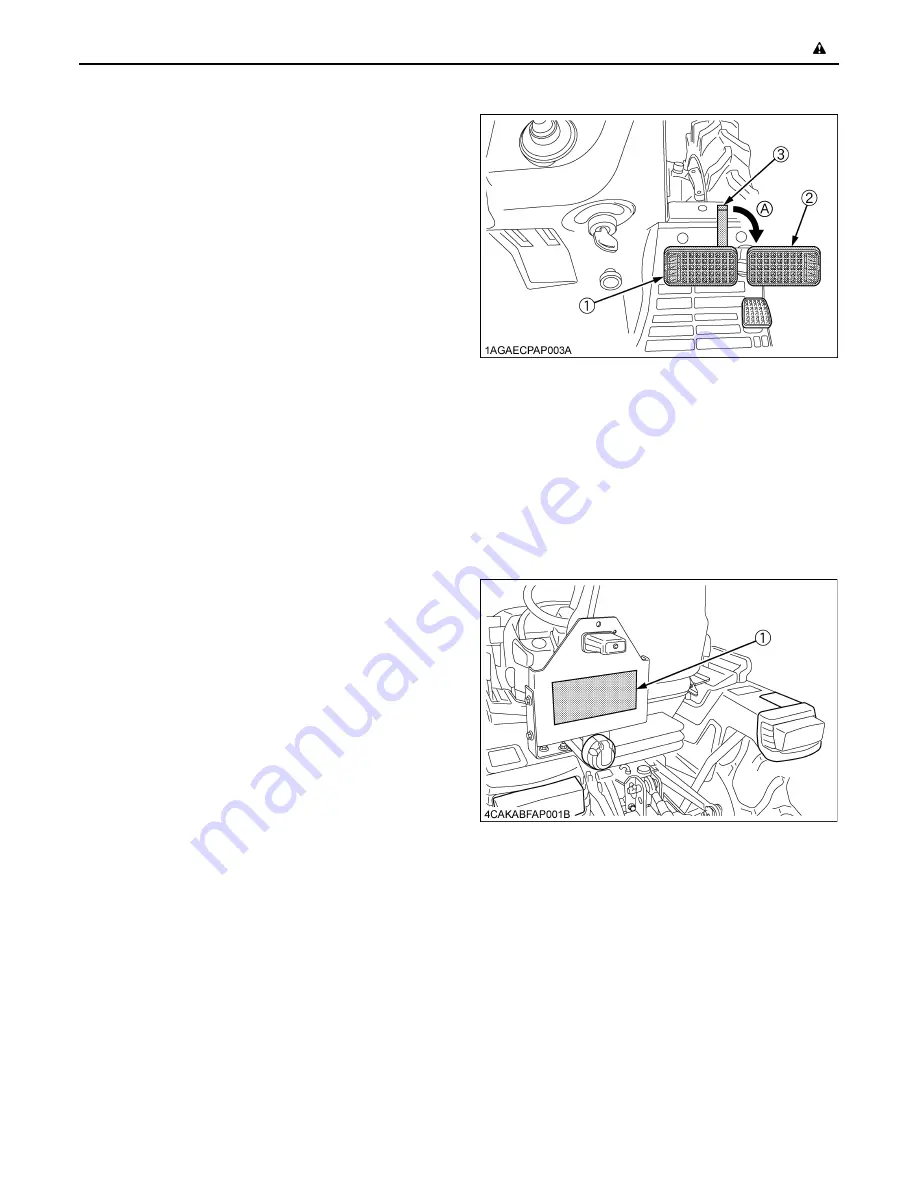
-
3
SAFE OPERATION
C
Safety for children
Tragedy can occur if the operator is not alert to the
presence of children. Children generally are attracted to
machines and the work they do.
1. Never assume that children will remain where you last
saw them.
2. Keep children out of the work area and under the
watchful eye of another responsible adult.
3. Be alert and shut your machine down if children enter
the work area.
4. Never carry children on your machine. There is no safe
place for them to ride. They may fall off and be run
over or interfere with your control of the machine.
5. Never allow children to operate the machine even
under adult supervision.
6. Never allow children to play on the machine or on the
implement.
7. Use extra caution when backing up. Look behind and
down to make sure area is clear before moving.
C
Operating on slopes
Slopes are a major factor related to loss-of-control and tip-
over accidents, which can result in severe injury or death.
All slopes require extra caution.
1. To avoid upsets, always back up steep slopes. If you
cannot back up the slope or if you feel uneasy on it, do
not operate on it. Stay off slopes too steep for safe
operation.
2. Driving forward out of a ditch, mired condition or up a
steep slope increases the risk of a tractor to be upset
backward. Always back out of these situations. Extra
caution is required with four-wheel drive models
because their increased traction can give the operator
false confidence in the tractor's ability to climb slopes.
3. Keep all movement on slopes slow and gradual. Do
not make sudden changes in speed, direction or apply
brake and make sudden motions of the steering
wheel.
4. Avoid disengaging the clutch or changing gears speed
when climbing or going down a slope. If on a slope
disengaging the clutch or changing gears to neutral
could cause loss of control.
5. Special attention should be made to the weight and
location of implements and loads as such will affect the
stability of the tractor.
6. To improve stability on slope, set widest wheel tread
as shown in "TIRE, WHEEL AND BALLAST" section.
Follow recommendations for proper ballasting.
C
Driving the tractor on the road
1. Lock the two brake pedals together to help assure
straight-line stops. Uneven braking at road speeds
could cause the tractor to tip over.
2. Check the front wheel engagement. The braking
characteristics are different between two and four
wheel drive. Be aware of the difference and use
carefully.
3. Always slow the tractor down before turning. Turning
at high speed may tip the tractor over.
4. Observe all local traffic and safety regulations.
Use the number plate as required.
5. Turn the headlights on. Dim them when meeting
another vehicle.
6. Drive at speeds that allow you to maintain control at all
times.
7. Do not apply the differential lock while traveling at road
speeds. The tractor may run out of control.
8. Avoid sudden motions of the steering wheel as they
can lead to a dangerous loss of stability. The risk is
especially great when the tractor is traveling at road
speeds.
9. Keep the ROPS in the "UP" position and wear the seat
belt when driving the tractor on the road.
Otherwise, you will not be protected in the event of a
tractor roll-over.
(1) Brake Pedal (LH)
(2) Brake Pedal (RH)
(3) Brake Pedal Lock
(A) Whenever travelling on the road
(1) Number plate












































